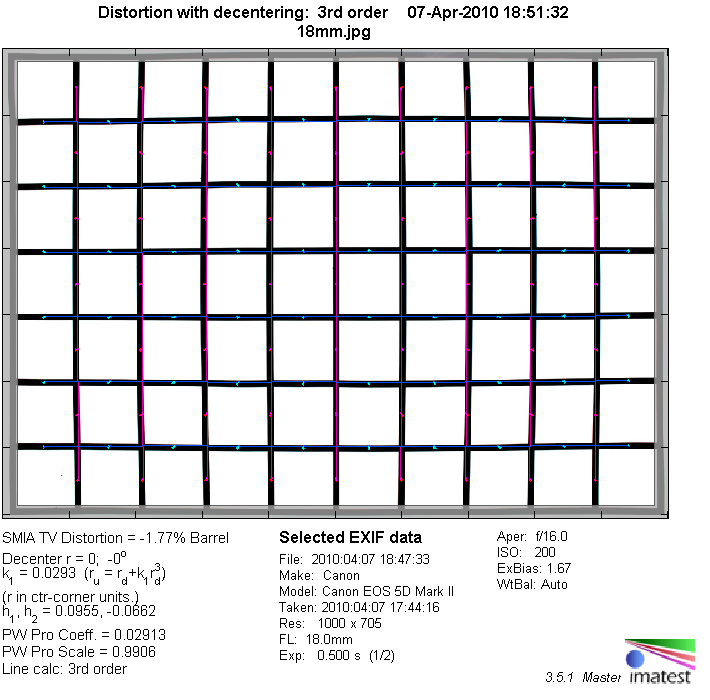|
Zeiss Distagon T* 18mm f/3.5 ZE (Canon EOS) - Review / Test Report - Analysis |
|
Lens Reviews -
Canon EOS (Full Format)
|
|
Page 2 of 3

Distortion
The Zeiss Distagon 18mm f/3.5 produces a moderate degree (~1.8%) of barrel distortion. This may be noticeable but it's actually very good for an ultra wide-angle prime lens. However, there's a bit of a wavy sub-frequency in there so if you want to eliminate the remaining bits of distortion this may not be all that easy anymore.

Vignetting
The vignetting characteristic seems to be a real weakness of Zeiss Z-series lenses when used on full format DSLRs.
The Distagon shows a fairly extreme deterioration of ~3.1EV at f/3.5 - this will be visible and it's annoying unless you take the key hole effect as an arty aspect.
The problem is still very pronounced at f/5.6 (@ ~1.6EV) and acceptable at f/8 and beyond. To be fair - this is fairly typical for an ultra wide angle lens.
 Here're some sample images from the lab:
Here're some sample images from the lab:
| f/3.5 | f/5.6 |
 |  |
MTF (resolution)
The Zeiss has an impressive resolution characteristic for such an extreme focal length. The center resolution is very good at f/3.5 and the borders/corners follow on a good(+) level.
Stopping down to f/5.6 lifts the center to an excellent and the borders/corners to a very good (just) quality. The peak performance is reached at f/8. Diffraction effects are reducing
the resolution from f/11 onwards but the lens is still easily usable at this setting. The field curvature is fairly pronounced but it shouldn't have a big impact at f/5.6 and beyond.
Please note that the MTF results are not directly comparable across the different systems!
Below is a simplified summary of the formal findings. The chart shows line widths per picture height (LW/PH) which can be taken as a measure for sharpness.
If you want to know more about the MTF50 figures you may check out the corresponding Imatest Explanations
Chromatic Aberrations (CAs)
Chromatic aberrations (color shadows at harsh contrast transitions) are moderate at less than
1.4px on the average at the image borders. This is, again, pretty good for an ultra wide-angle lens
although the problem will be visible at times. It is, of course, possible to correct lateral CAs
in most modern RAW converters.

|